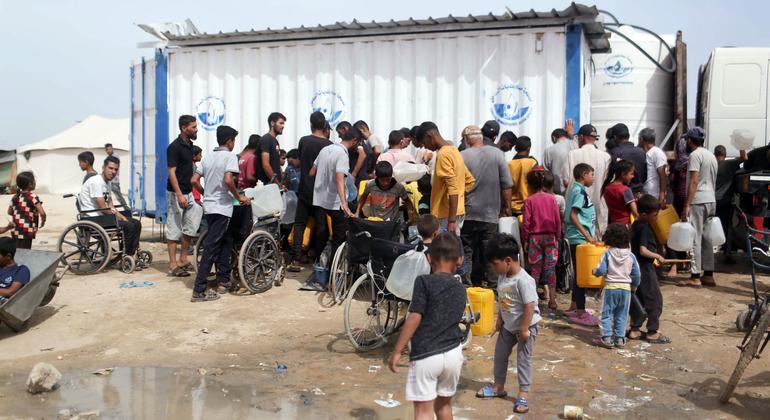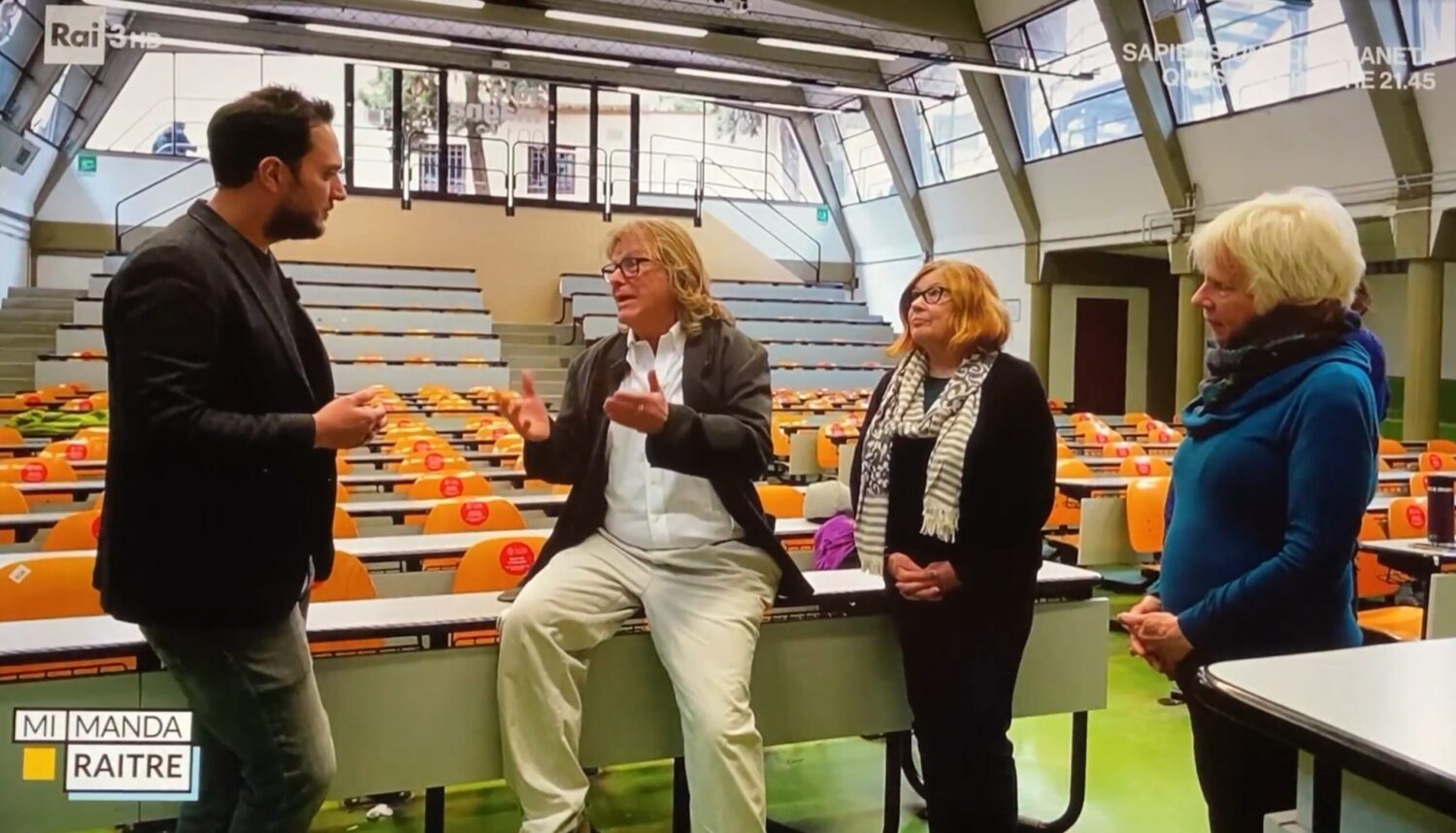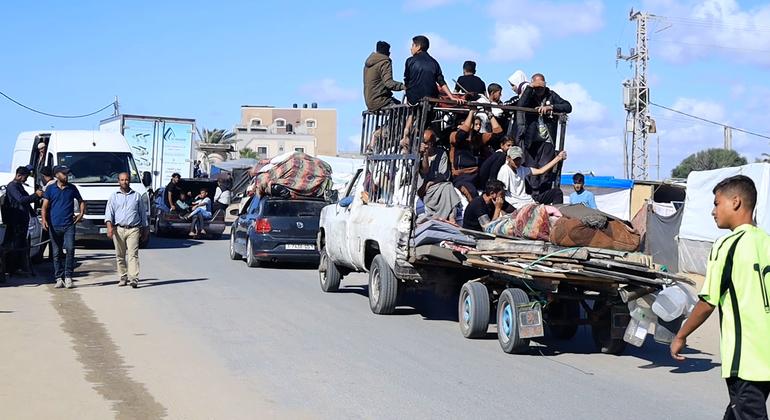The current situation has reached an “unprecedented emergency level”, he said, and the most recent evacuation order by Israel has forced tens of thousands to flee.
As part of the contingency effort, WHO and partners have been establishing field hospitals and supporting restoration of the Nasser Medical Complex in Khan Younis, which will be used as a main referral hospital and with the aim of re-establishing basic health services.
“We have installed a large warehouse in Deir Al Balah and we moved the majority of supplies to ensure rapid access and movement of supplies to Khan Younis, Middle Area and north Gaza,” he added.
Hospitals already ‘overloaded’
There are currently three hospitals operating in Rafah, including the Emirati Maternity Hospital, and over the past weeks WHO has been ensuring that they are fully prepared and supported in terms of medical supplies.
Dr. Dahir said the hospitals are already “overloaded with patients” and recent developments have affected access. He cited the example of Al-Najjar Hospital, which provides dialysis services for more than 100 patients.
“Unfortunately, the hospital is among the blocks which were ordered by the Israeli Government for evacuation, so patients are afraid to seek services,” he said.
“We are also hearing that there are many patients who are being admitted in this hospital who start to move from the hospital.”
He emphasized that WHO has always advocated for hospitals to be protected.
“We have set clear mechanisms for a referral pathway between the hospitals and in case that hospitals will not be accessed, what are the other alternatives? And that’s why we have been supporting the restoration of Nasser Medical Complex in Khan Younis.”
Asked about the situation of pregnant women and newborns, Dr. Dahir noted that the Emirati Maternity Hospital is one of the key facilities of its kind across Gaza, delivering more than 100 babies each month.
“We have been ensuring that the hospital is fully occupied. And in case we lose accessibility, then we will be able to refer pregnant mothers, for instance, to field hospitals in Al Mawasi area as well as the Nasser Medical Complex,” he said.
Fuel running out
Meanwhile, fuel critical for humanitarian operations in Gaza could run out “tomorrow” and some food stocks might only last to the end of the week, a senior UN aid official in the region said on Tuesday.
Andrea De Domenico, head of the UN humanitarian affairs office, OCHA, in the occupied Palestinian territories, said the closure of the Rafah crossing with Egypt has severed access to fuel, affecting the entry of critical relief items and curtailing the movement of aid workers.
Speaking from Jerusalem, Mr. De Domenico said lack of fuel is a particular concern as humanitarians have just around 30,000 litres of diesel available when they normally use 200,000 litres a day.
Priority is being given to health, water and communication, with some fuel set aside as contingency for the secure movement of staff.
“That will leave us basically with no fuel as of tomorrow,” he said.
“The Israelis have provided assurances that they are working out a way to bring in more fuel and they are hoping to be able to organize this tomorrow. We will see,” he added, noting that distribution will also be a challenge “if Rafah is caught in the middle of the military operation”.
Communication networks affected
Mr. De Domenico explained that communication companies are unable to receive the daily quantities of fuel required to sustain their networks.
“This means that as of a couple of days, people will not have access to information, we will not be able to gather information for people to understand their needs, and families will not be able to connect during displacement if they get separated”.
He recalled that over 75 per cent of the Gaza population has been displaced and “may now have no option but to remain in an ever-decreasing area of land”.
Lack of shelter
People are moving to sites that do not have latrines, water points, proper drainage, or shelter.
“It is impossible to improve the situation in the existing and the new displacement sites without the entry of supplies and without the fuel to transport them to the locations where the people are concentrating,” he said.
Meanwhile, aid partners working in the shelter sector only have some 1,500 tents. He said lack of tents combined with the high percentage of damaged or destroyed homes in Gaza, means that displaced people leaving Rafah are forced to find other shelter options.
“They need shelter materials such as tarpaulins, ropes, plastic shelter, nails, and those tools are simply not available in in Gaza. And without the humanitarian assistance that will bring those in, we will not be able to support them.”
Food stocks dwindling
Additionally, most food distributions in the south have been suspended since Monday as many warehouses are in the part of Rafah that has been affected by hostilities. Furthermore, he estimated that most aid partners could run out of food to support people south of Wadi Gaza by the end of the week.
Humanitarians are also running out of fuel to dispatch remaining commodities for distribution to households and to 16 bakeries supported by the World Food Programme (WFP).
The embattled health sector also will be impacted if military operations continue, as the three remaining hospitals in Rafah will become inoperable, depriving 1.2 million people of care.
Water and waste management
Mr. De Domenico further warned that “without fuel tomorrow, the main water production will be shut down in the north, depriving the entire population of access to drinking water.”
The same would apply in the south and middle governorates in the coming days, affecting 1.9 million people.
There is also the “huge issue” of solid waste collection, which also relies on fuel supply, and collection points in the south have already been reduced.
“We estimated there will be a production of 1,400 tonnes of waste per day that will accumulate in the streets all over. And this was already a big challenge because also we do not have access yet to the landfill where we could deliver and drop all the garbage,” he said.
He added that the sewage pumping station in East Rafah has already stopped working due to the military operation, impacting 80,000 people.
Concern for unaccompanied children
UN agencies on Tuesday highlighted the plight of women and girls, as well as children, and Mr. De Domenico also focused on the issue of unaccompanied and separated minors.
He said their numbers “will rapidly increase while our ability to provide them basic support will be heavily reduced if the situation in Rafah evolves with a further military operation.














